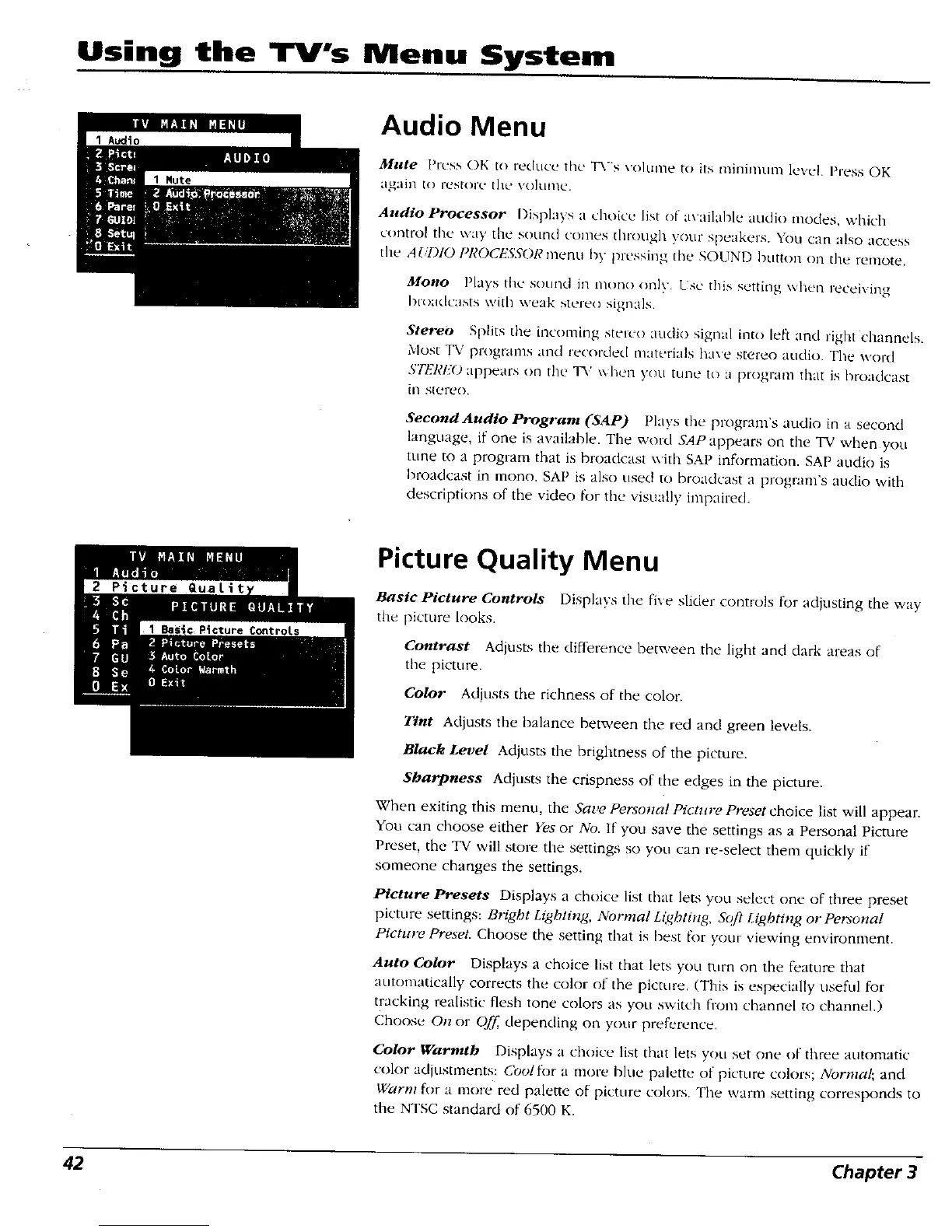Using the Tit's Menu System
Audio Menu
Mute Pt-_:ss OK to reduce the "D+-s \'olunle to its n]itlilnLiln k'vel, Press OK
again to _cstorc the volutn_ +.
Audio Processor I)ispla,_s a choice list oF available audio ntodes, which
control the way the sound comes [hroug]l your s[,eakers. You can also access
the AUDIO PROC_'SSOR menu by pressing tlae SOUND button on the remote.
Mono Plays the sound in mono onh Use this setting when iecei\ing
broadcasts with weak stereo signals.
Stereo Splits the incoming stmeo audio signal intoleft and right channels.
Most TV plx)grams and reeorded materials }]a\e stereo audio. Tile \\ord
STEREO appears on the 1A _ hen you tune to a program fltat is broadcast
ill stere().
Second Audio Program (SAP) Plays the program's audio in a second
language, if one is available. The word SAP appears on the TV when you
tune to a program that is broadcast with SAP infornmtion. SAP audin is
broadcast in mono. SAP is also used tu broadcast a program's audio with
descriptions of the video {br the visually impaired.
Picture Quality Menu
Basic Picture Controls Displays the fixe slider controls for adjusting the way
the picture looks.
Contrast Adjusts the difference between the light and dark areas of
the picture.
Color Adjusts the richness of the color.
Tint Adjusts the balance between the red and green levels.
Black Level Adjusts the brighmess of the picture.
Sharpness Adjusts the crispness of the edges in the picture.
When exiting this menu, the Save Personal Picture Preset choice list will appear.
You can choose either Yes or No. If you save the settings as a Personal Picture
Preset, the TV will store the settings so you can re-select them quickly if
someone changes the settings.
Picture Presets Displays a choice list that lets you select one of three preset
picture settings: Bright Lighting, Normal Lighting, SQ]?Lighting or Personal
Picture Preset. Choose the setting that is best for your viewing environment.
Auto Color Displays a choice list that lets you turn on the feature that
automatically corrects the color of the picture. (This is especially useful f(n-
tracking realistic flesh tone colors as yott switch flom channel to channel.)
Choose On or Qff, depending on your preference.
Color Warmth Displays a choice list that lets you set one of three automatic
color adjustments: Cool for a more blue palette of picture colors; Normal; and
Warm for a more red palette of picture colors. Tbe warm setting corresponds to
the NTSC standard of 6500 K.
42 Chapter 3
